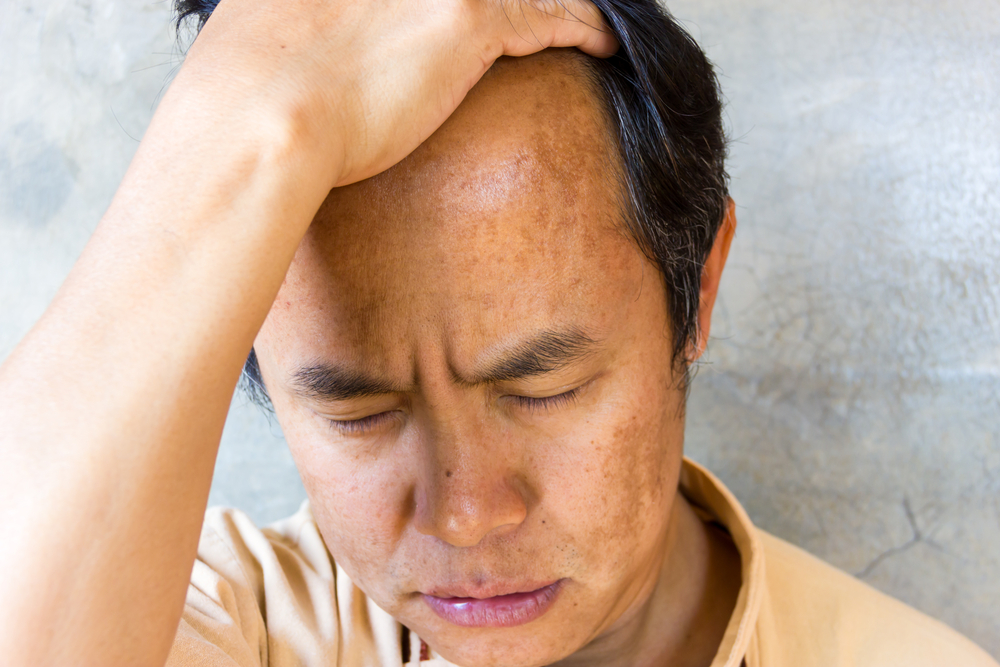Are you prone to oily skin? You could have seen a few little, persistent bumps with a yellow tint on your face as your skin grew older. That is not a symptom of pox. It might be Sebaceous hyperplasia. Although getting rid of it can be difficult, it is not impossible!
Sebaceous hyperplasia may be seen frequently on your nose and forehead. Learn more about sebaceous hyperplasia, its dangers, remedies, and techniques for reducing oil gland size on the nose.
What Is Sebaceous Hyperplasia?
Sebaceous hyperplasia is a typical and benign condition that primarily affects middle-aged or older men and women. Sebum can get stuck inside the gland due to an overabundance of oil-producing cells, causing it to enlarge and develop a hump under the skin.
In some situations, your glands may be overactive, producing more oil than your skin requires, causing clogged hair follicles. The disorder can affect any part of your body, but it occurs more frequently in the face and nose areas.
What Does Sebaceous Hyperplasia Look Like?
Sebaceous hyperplasia causes the skin to develop yellow or flesh-colored lumps, usually 2 to 4 millimeters wide.
Each bump has a small pit in the middle, and occasionally blood vessels can be seen there. Small, white-yellow lumps encircle the hole in the middle. It’s pleasant to touch them.
Fordyce spots might look like sebaceous hyperplasia. Fordyce spots are slightly raised sebaceous oil glands visible in the hairless areas of your skin. But sebaceous glands are visible oil glands that have a bump-like appearance.
Basal cell carcinoma and sebaceous hyperplasia have a similar look, which could cause misinterpretation. Basal cell carcinoma lumps are often larger and redder than sebaceous hyperplasia. Your doctor may take a biopsy of the lump to see if you have basal cell carcinoma or sebaceous hyperplasia.
What Makes Sebaceous Hyperplasia Worse?
Sebaceous hyperplasia is a condition marked by an overabundance of sebaceous glands in the skin, which results in the growth of small, yellowish pimples. Although the precise reasons of sebaceous hyperplasia are yet unknown, it is thought that hormonal changes and inherited factors are to blame.
Several factors might worsen sebaceous hyperplasia, including
- Sun exposure
- Use of particular medications (like corticosteroids)
- Hormone changes (including those that take place during pregnancy or menopause)
- Oily skin
Even though sebaceous hyperplasia is benign and not dangerous, you can still see a dermatologist if the lumps disturb you. To get rid of them, they could recommend topical treatments or surgical procedures.
Is Sebaceous Hyperplasia A Serious Concern?
A mild (non-cancerous) condition known as sebaceous hyperplasia is defined by the widening of the sebaceous glands, which are responsible for the creation of oil (sebum) on the skin.
Small yellowish pimples on the skin, usually on the face, are the external signs of those swollen glands. Sebaceous hyperplasia is not a major problem, but it may be unattractive and make those who have discomfort or self-awareness. To best treat this disease, it is essential to talk to a dermatologist.
When it comes to children and youth, it is unusual. It was noted that the prevalence of sebaceous hyperplasia in people receiving chronic immunosuppressive therapy ranged from 10% to 16% in those receiving long-term cyclosporin treatment.
Rare instances of Muir-Torre have also been associated with sebaceous hyperplasia. Sebaceous adenomas generally correlate more strongly with this syndrome, whereas sebaceous hyperplasia is common in people with no underlying disease.
Major differential diagnoses include sebaceous adenoma, sebaceous node, lupus miliaris disseminatus faciei and basal cell cancer.
How To Get Rid Of Sebaceous Hyperplasia Naturally?
Using topical retinoids like tretinoin or adapalene is one natural technique to lessen the appearance of sebaceous hyperplasia. These drugs can reduce the size of the pimples and enhance the skin’s general appearance.
Using tea tree oil, which has antibacterial and anti-inflammatory qualities, is another natural remedy. Use a cotton swab to apply a little tea tree oil straight to the afflicted region. Before using it on your entire face, conduct a patch test.
When using retinoids or applying tea tree oil to your skin, keep in mind that sunscreen is crucial because these products may make your skin more sensitive to the sun.
It’s also crucial to remember that it’s always better to get dermatological advice before attempting any new skincare regimen.
Treatment Options For Sebaceous Hyperplasia
There are several non-surgical and at-home treatment options available if you do not want the sebaceous gland on your nose to be removed using non-surgical options.
- Retinol: Look for creams with retinol or vitamin A as an active component if you wish to start with an over-the-counter remedy. Retinol aids in preventing excessive oil buildup in your pores. You may still be able to utilize a topical cream with prescription-grade concentrations by visiting a dermatologist if over-the-counter choices are insufficient.
- Warm compress: If buildup is preventing oil from escaping from under your skin, a warm compress may assist to open your pores. Although it won’t eliminate the issue, an at-home remedy might reduce the bumps.
- Photodynamic therapy: With this in-office procedure, your doctor will apply a solution to your skin. It might be necessary to let the solution soak for one or two hours on sensitive regions like your face. The solution may need to sit overnight in some regions. Your doctor will use a special light to eradicate the spots after applying the remedy.
- Electrocauterization: This medical procedure is another one that can be done in-office. Your doctor vaporizes and heats each bump individually using an electrically charged needle. After the treatment, you’ll grow a scab, but after the scab comes off, the spot should be gone. A subtle scar from this kind of treatment might appear.·
- Laser therapy: Your doctor removes the top layer of skin with a laser to let the sebum oil escape and your skin clear up.·
- Cryotherapy: The area is frozen using a specific solution. After this operation, there can be some discoloration before the spot dries and falls off.
FAQs
A: A variety of therapies are available to treat sebaceous hyperplasia, such as photodynamic therapy, electrocauterization, laser therapy, cryotherapy, etc.
A: Refined carbohydrates like sugar, refined flour, white bread, bakery goods, dairy items, red meat, etc. are among the foods that cause sebaceous hyperplasia.
A: Since sebaceous hyperplasia is a benign condition, treatment is usually not necessary. Lesions can, nevertheless, be unattractive and annoying.









